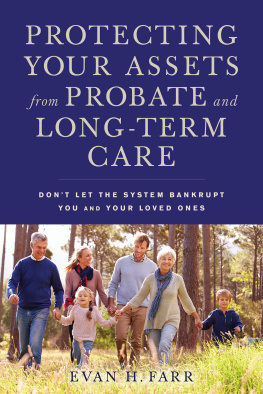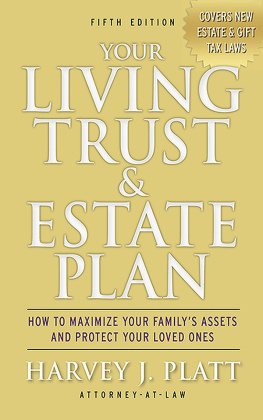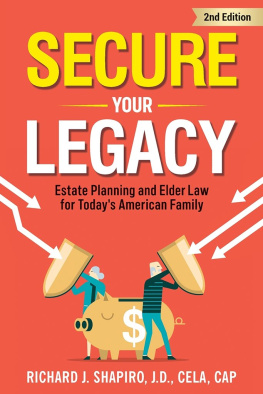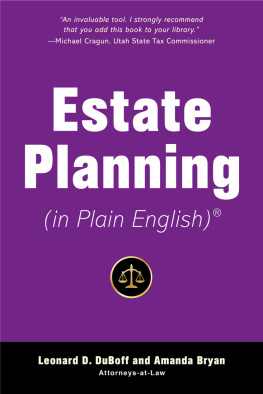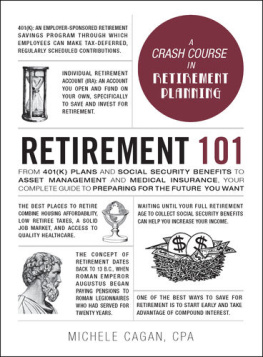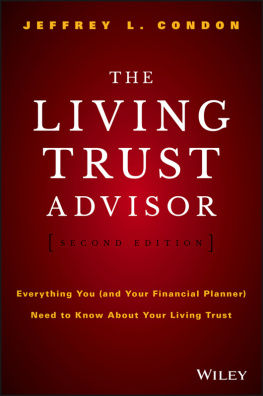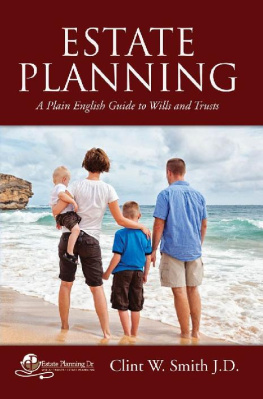Copyright 2017 by Evan H. Farr
All rights reserved. Copyright under Berne Copyright Convention, Universal Copyright Convention, and Pan American Copyright Convention. No part of this book may be reproduced, stored in a retrieval system, or transmitted in any form, or by any means, electronic, mechanical, photocopying, recording or otherwise, without the express written consent of the publisher, except in the case of brief excerpts in critical reviews or articles. All inquiries should be addressed to Allworth Press, 307 West 36th Street, 11th Floor, New York, NY 10018.
Allworth Press books may be purchased in bulk at special discounts for sales promotion, corporate gifts, fund-raising, or educational purposes. Special editions can also be created to specifications. For details, contact the Special Sales Department, Allworth Press, 307 West 36th Street, 11th Floor, New York, NY 10018 or .
20 19 18 17 16 5 4 3 2 1
Published by Allworth Press, an imprint of Skyhorse Publishing, Inc.
307 West 36th Street, 11th Floor, New York, NY 10018.
Allworth Press is a registered trademark of Skyhorse Publishing, Inc., a Delaware corporation.
www.allworth.com
Cover design by Mary Belibasakis
Library of Congress Cataloging-in-Publication Data is available on file.
Print ISBN: 978-1-62153-553-9
Ebook ISBN: 978-1-62153-562-1
Printed in the United States of America
Table of Contents
Foreword
Most people doing estate planning use a revocable living trust to avoid the hassles and expenses of probate. There are hundreds of books and thousands of websites devoted to the revocable living trust, and it is widely recognized by attorneys and consumers that a revocable living trust is tremendously superior to a last will and testament as an estate planning tool. This book will not attempt to explore in depth all of the benefits of a revocable living trust, but it will highlight some. Readers not familiar with all of the benefits of a revocable living trust should obtain one of the many other excellent books on this topic.
One of the best is the seminal book on the topic The Living Trust: The Failproof Way to Pass Along Your Estate to Your Heirs by Henry Abst. Mr. Abst essentially created the revocable living trust industry when he published his book back in 1989, which quickly became and still is the bible on how to avoid probate. I remember it, because I started practice back in 1987, two years before his book came out, and at that time no one was doing living trusts; they were essentially unheard of. Even though living trusts had been used as far back as sixteenth-century England, Mr. Abst came along just twenty-five years ago, put together all the puzzle pieces, wrote a book explaining it, and completely revolutionized the estate planning industry.
Although a revocable living trust does a terrific job of avoiding probate, what most people dont realize is that a revocable living trust does not protect your assets from creditors or from the expenses of long-term care.
What Mr. Abst did for the revocable living trust, I have done for the Living Trust Plusrevolutionizing the estate planning and asset protection industry since 2009 by making the Living Trust Plus a nationally recognized estate planning optionthe only option that provides consumers with all the best features of a regular living trust plus the extra and vital benefit of asset protection that consumers are so hungry for.
This book will explain, among other things, how to use the Living Trust Plus to protect your assets from the expenses of probate plus lawsuits plus long-term care. In doing so, I will first explain the problems of probate and the risks of lawsuits and long-term care. Then well start looking at the possible solutions. First, well look at whether wills offer a solution. Second, well look at joint ownership and beneficiary designations. Third, well examine living trustsboth the regular living trust (i.e., the revocable living trust that Mr. Abst wrote about and that almost everybody has heard of, designed primarily to avoid probate) and, more important, the Living Trust Plus. Last, well explore numerous other solutions that will protect your assets from the expenses of probate and long-term care.
Evan H. Farr, CELA, CAP
Certified Elder Law Attorney, National Elder Law Foundation
Member, Council of Advanced Practitioners, NAELA
Creator of the Living Trust Plus
www.LivingTrustPlus.com
www.FarrLawFirm.com
EverythingElderLaw.com
CHAPTER 1
The Problem of Probate
Almost everyone has heard of the nightmare of probate. These words just go together. You hardly ever hear about probate without hearing about the nightmare of probate because probate really is, for the most part, almost always a nightmare.
Basically, probate is a complex, expensive, court-supervised process that many families are forced to go through when a loved one becomes incapacitated during his or her lifetime, or when a loved one dies. Probate occurs whether your loved one becomes incapacitated and does not have a general power of attorney, or dies without a will (intestate), or dies with a will (testate). Consider the following case study.
PROBATE CASE STUDY
Background
Mary Johnson is an eighty-four-year-old widow with three childrenJoan, Sam, and Bill. Joan and Sam are both trustworthy and responsible adults and have maintained a loving relationship with Mary over the years. Joan is a nurse in a doctors office, and Sam works as an advertising executive. Bill, unfortunately, has had a checkered pasthes never held a job for more than a year, has had serious financial problems, has spent time in jail for theft (including stealing a significant sum of money from Mary), and has had no contact with the rest of the family for the past fifteen years.
Marys husband, John, died three years ago. John died intestate, meaning he had never written a will, and when he died, his estate had to go into probate because John had several accounts that did not have Marys name on them. Mary had paid a lawyer more than $10,000 to have Johns estate probated so all of Johns accounts could be put into her name, and Mary didnt want her children to have to go through all that hassle and expense when she died.
So Mary asked the lawyer to draw up a will for her, assuming that the will would avoid the expenses and hassles of probate that she had gone through with Johns estate. She told the attorney to name her children Joan and Sam as the beneficiaries of her will and to name Joan to be the executor of her will. Because Mary didnt want to leave anything to Bill, she didnt bother mentioning Bill to the attorney. At the attorneys suggestion, Mary also signed incapacity planning documentsa general power of attorney and an advance medical directive. The lawyer explained that these documents were important for avoiding lifetime probate if Mary were to become incapacitated. Unfortunately, the lawyer did not explain that Marys will would simply put her estate through probate after her death because he just assumed Mary understood that.
Mary was very pleased to tell Joan and Sam that she had set up everything with the lawyer to make things as easy as possible for Joan and Sam after her death, not realizing that the will she signed was not going to avoid probate, but rather was going to put her estate through probate.
One year after her husbands death, Mary fell and broke her hip, an extremely common occurrence among women Marys age. After undergoing hip surgery, Mary spent four days in the hospital and was then transferred to a nearby nursing facility for rehabilitation. At first, Mary did the best she could to participate in all of the exercises the physical therapists wanted her to do. But then, about two weeks after the surgery, Mary developed pneumonia, a very serious complication after major surgery, and she was so weakened after contracting pneumonia that she felt unable to participate in the physical therapy.

